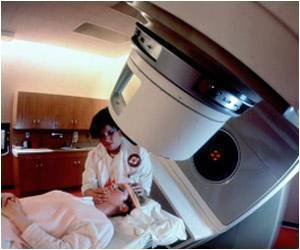According to a recent study’s findings presented at the 2014 Multidisciplinary Head and Neck Cancer Symposium, for head and neck cancer patients receiving radiation therapy, a decline in the amount of radiation treatment quantity to the submandibular (level IB) lymph nodes eventually led to better patient-reported salivary function.
The study’s research also found notable cutbacks in radiation dose to the salivary organs, and good local regional control.
Researchers assessed 125 patients with node-positive oropharyngeal cancer who were administered chemoradiation at Memorial Sloan-Kettering Cancer Center in New York between May 2010 and December 2011.
The mean patient age was 57. Fifty-one percent of patients had base of tongue lesions; 41 percent had tonsil cancer; and 6 percent were classified as "other." The breakdown of patients' cancer stage/classification was: 74 percent T1-2 and 26 percent T3-4. All patients had cancer with lymph node involvement, including 16 percent N1; 8 percent N2A; 48 percent N2B; and 28 percent N2C.
Patients were split into two groups: those with sparing, or a reduction of radiation treatment volume to the region, of bilateral level IB nodes and those who underwent treatment without sparing.
A potential questionnaire regarding xerostomia (dry mouth) to evaluate late xerostomia was given to patients in both groups at each patient follow-up visit; clinical evaluation (observer-rated) xerostomia scores were also documented.
The participants who underwent treatment involving sparing experienced major improvement in patient-reported xerostomia summary scores (p=0.021) and observer-rated xerostomia scores (p=0.006) over the group in which there was no sparing. The two-year local regional control rate for the spared group was 97.5 percent and 93.8 percent for the group treated, demonstrating a low rate of cancer recurrence at the original tumor site.
Additionally, study results revealed reductions in the average radiation doses to the mouth and neck regions of patients in the spared group over the group with no sparing, including the ipsilateral submandibular gland (63.9 Gy vs. 70.5 Gy; p<.001); the contralateral submandibular gland (45.0 Gy vs 56.2 Gy, p<0.001); and the oral cavity (35.9 Gy vs 45.2 Gy; p <0.001).
"Radiation therapy plays an important role in the treatment of head and neck cancers. Poor salivary function is the most common side effect of radiation treatment to the head and neck region. Our data shows that it is safe to spare the tumor-free level IB lymph nodes in oropharyngeal cancer from radiation treatment. Sparing this lymph node level will reduce radiation dose to several nearby salivary organs and therefore cause less damage to a patients post-treatment salivary function," said lead author of the study and an MD candidate in his final year at New York University School of Medicine, Moses Tam, BS.










